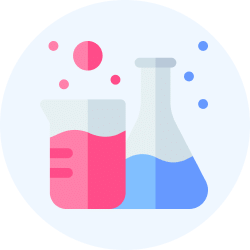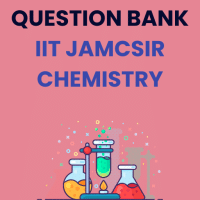Chemistry Exam > Chemistry Questions > Hydrogen bonding is maximum in:a)Ethanolb)Eth...
Start Learning for Free
Hydrogen bonding is maximum in:
- a)Ethanol
- b)Ethyl chloride
- c)Diethyl ether
- d)Triethylamine
Correct answer is option 'A'. Can you explain this answer?
Most Upvoted Answer
Hydrogen bonding is maximum in:a)Ethanolb)Ethyl chloridec)Diethyl ethe...
Hydrogen bonding is maximum in ethanol.
Explanation:
What is hydrogen bonding?
Hydrogen bonding is a special type of intermolecular force that occurs between molecules containing hydrogen atoms bonded to highly electronegative elements such as oxygen, nitrogen, or fluorine. It is a strong dipole-dipole interaction that results in the formation of a partially positive hydrogen atom and a partially negative atom.
Factors affecting hydrogen bonding:
There are several factors that influence the strength of hydrogen bonding, including:
1. Electronegativity difference: The greater the electronegativity difference between hydrogen and the atom it is bonded to, the stronger the hydrogen bonding.
2. Size of the atom: Smaller atoms with higher electronegativity can form stronger hydrogen bonds.
3. Number of hydrogen bonding sites: The more hydrogen atoms bonded to electronegative atoms, the more hydrogen bonding sites are available.
4. Molecular shape: The presence of hydrogen bonding sites in a linear or planar arrangement increases the strength of hydrogen bonding.
Comparison of the given compounds:
a) Ethanol: Ethanol (CH3CH2OH) contains an -OH group, which can form hydrogen bonds. The electronegative oxygen atom attracts the hydrogen atom, resulting in the formation of strong hydrogen bonds between ethanol molecules.
b) Ethyl chloride: Ethyl chloride (CH3CH2Cl) does not contain any hydrogen bonding sites. The chlorine atom is not electronegative enough to form strong hydrogen bonds.
c) Diethyl ether: Diethyl ether (CH3CH2OCH2CH3) contains an oxygen atom, but it does not have any hydrogen bonding sites. The oxygen atom is not bonded to a hydrogen atom.
d) Triethylamine: Triethylamine (N(C2H5)3) does not contain any hydrogen bonding sites. Although it contains a nitrogen atom, it is not bonded to a hydrogen atom.
Conclusion:
Among the given compounds, ethanol has the maximum hydrogen bonding because it contains an -OH group, which can form strong hydrogen bonds. The other compounds do not have hydrogen bonding sites or have less electronegative atoms, resulting in weaker or no hydrogen bonding.
Explanation:
What is hydrogen bonding?
Hydrogen bonding is a special type of intermolecular force that occurs between molecules containing hydrogen atoms bonded to highly electronegative elements such as oxygen, nitrogen, or fluorine. It is a strong dipole-dipole interaction that results in the formation of a partially positive hydrogen atom and a partially negative atom.
Factors affecting hydrogen bonding:
There are several factors that influence the strength of hydrogen bonding, including:
1. Electronegativity difference: The greater the electronegativity difference between hydrogen and the atom it is bonded to, the stronger the hydrogen bonding.
2. Size of the atom: Smaller atoms with higher electronegativity can form stronger hydrogen bonds.
3. Number of hydrogen bonding sites: The more hydrogen atoms bonded to electronegative atoms, the more hydrogen bonding sites are available.
4. Molecular shape: The presence of hydrogen bonding sites in a linear or planar arrangement increases the strength of hydrogen bonding.
Comparison of the given compounds:
a) Ethanol: Ethanol (CH3CH2OH) contains an -OH group, which can form hydrogen bonds. The electronegative oxygen atom attracts the hydrogen atom, resulting in the formation of strong hydrogen bonds between ethanol molecules.
b) Ethyl chloride: Ethyl chloride (CH3CH2Cl) does not contain any hydrogen bonding sites. The chlorine atom is not electronegative enough to form strong hydrogen bonds.
c) Diethyl ether: Diethyl ether (CH3CH2OCH2CH3) contains an oxygen atom, but it does not have any hydrogen bonding sites. The oxygen atom is not bonded to a hydrogen atom.
d) Triethylamine: Triethylamine (N(C2H5)3) does not contain any hydrogen bonding sites. Although it contains a nitrogen atom, it is not bonded to a hydrogen atom.
Conclusion:
Among the given compounds, ethanol has the maximum hydrogen bonding because it contains an -OH group, which can form strong hydrogen bonds. The other compounds do not have hydrogen bonding sites or have less electronegative atoms, resulting in weaker or no hydrogen bonding.
Free Test
FREE
| Start Free Test |
Community Answer
Hydrogen bonding is maximum in:a)Ethanolb)Ethyl chloridec)Diethyl ethe...
Ans: a
Explanation: Hydrogen bonding is maximum in ethanol. Hydrogen bonding is observed when the H atom is attached to more electronegative N, F or O atoms. Thus, hydrogen bonding is possible in ethanol and triethylamine. In ethanol, H is attached to more electronegative oxygen than in triethylamine, in which H is attached to less electronegative nitrogen. Moreover, in triethylamine, the +I effect of three methyl groups decreases the extent of hydrogen bonding.

|
Explore Courses for Chemistry exam
|

|
Question Description
Hydrogen bonding is maximum in:a)Ethanolb)Ethyl chloridec)Diethyl etherd)TriethylamineCorrect answer is option 'A'. Can you explain this answer? for Chemistry 2025 is part of Chemistry preparation. The Question and answers have been prepared according to the Chemistry exam syllabus. Information about Hydrogen bonding is maximum in:a)Ethanolb)Ethyl chloridec)Diethyl etherd)TriethylamineCorrect answer is option 'A'. Can you explain this answer? covers all topics & solutions for Chemistry 2025 Exam. Find important definitions, questions, meanings, examples, exercises and tests below for Hydrogen bonding is maximum in:a)Ethanolb)Ethyl chloridec)Diethyl etherd)TriethylamineCorrect answer is option 'A'. Can you explain this answer?.
Hydrogen bonding is maximum in:a)Ethanolb)Ethyl chloridec)Diethyl etherd)TriethylamineCorrect answer is option 'A'. Can you explain this answer? for Chemistry 2025 is part of Chemistry preparation. The Question and answers have been prepared according to the Chemistry exam syllabus. Information about Hydrogen bonding is maximum in:a)Ethanolb)Ethyl chloridec)Diethyl etherd)TriethylamineCorrect answer is option 'A'. Can you explain this answer? covers all topics & solutions for Chemistry 2025 Exam. Find important definitions, questions, meanings, examples, exercises and tests below for Hydrogen bonding is maximum in:a)Ethanolb)Ethyl chloridec)Diethyl etherd)TriethylamineCorrect answer is option 'A'. Can you explain this answer?.
Solutions for Hydrogen bonding is maximum in:a)Ethanolb)Ethyl chloridec)Diethyl etherd)TriethylamineCorrect answer is option 'A'. Can you explain this answer? in English & in Hindi are available as part of our courses for Chemistry.
Download more important topics, notes, lectures and mock test series for Chemistry Exam by signing up for free.
Here you can find the meaning of Hydrogen bonding is maximum in:a)Ethanolb)Ethyl chloridec)Diethyl etherd)TriethylamineCorrect answer is option 'A'. Can you explain this answer? defined & explained in the simplest way possible. Besides giving the explanation of
Hydrogen bonding is maximum in:a)Ethanolb)Ethyl chloridec)Diethyl etherd)TriethylamineCorrect answer is option 'A'. Can you explain this answer?, a detailed solution for Hydrogen bonding is maximum in:a)Ethanolb)Ethyl chloridec)Diethyl etherd)TriethylamineCorrect answer is option 'A'. Can you explain this answer? has been provided alongside types of Hydrogen bonding is maximum in:a)Ethanolb)Ethyl chloridec)Diethyl etherd)TriethylamineCorrect answer is option 'A'. Can you explain this answer? theory, EduRev gives you an
ample number of questions to practice Hydrogen bonding is maximum in:a)Ethanolb)Ethyl chloridec)Diethyl etherd)TriethylamineCorrect answer is option 'A'. Can you explain this answer? tests, examples and also practice Chemistry tests.

|
Explore Courses for Chemistry exam
|

|
Signup for Free!
Signup to see your scores go up within 7 days! Learn & Practice with 1000+ FREE Notes, Videos & Tests.


















